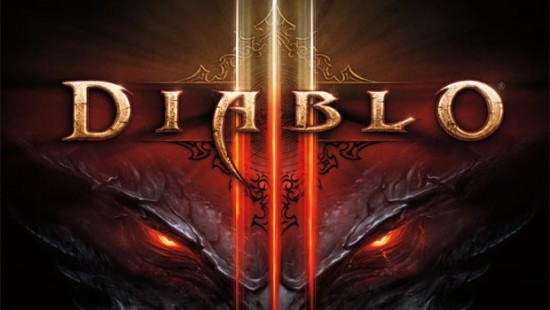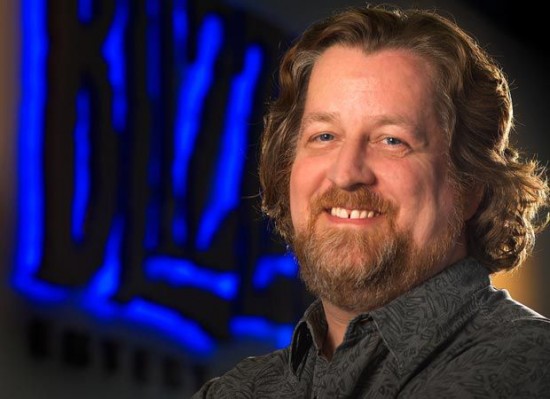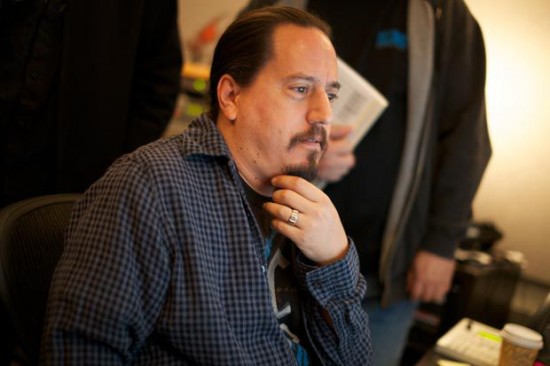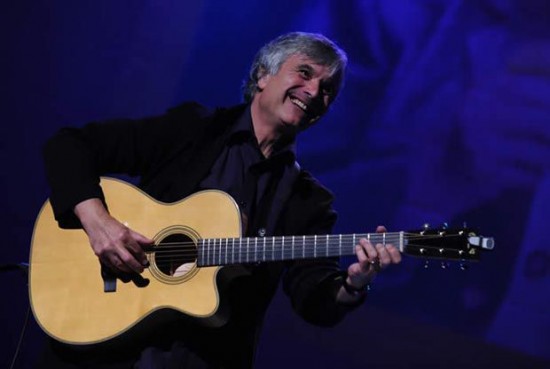[Originally posted on Destructoid [2]]
Diablo III has easily been one of my most anticipated games of the past five years (c’mon, we all knew it would be coming someday), and now it’s less than a week away. A lot has changed at Blizzard Entertainment since the release of Diablo II: Lord of Destruction in 2001, and we wanted to delve into the audio with Blizzard Entertainment’s audio director, Russell Brower, as well as with some of the composers and sound designers who have been toiling away on the game’s sound.
Although Diablo and Diablo II composer Matt Uelmen has long since left the company, the sound he crafted for the first two games in the series is still alive, and I think fans will be surprised by just how much respect that the entire team has the groundwork he laid down for Diablo III. As always, we also have some samples of the soundtrack for your enjoyment, so sit back, stay awhile, and listen.
Russell Brower (Blizzard Entertainment)
Role: Composer / Audio Director
Selected past works: StarCraft II: Wings of Liberty, World of Warcraft (all expansion sets)
On the overall approach to Diablo III:
Blizzard Entertainment has consistently been raising the musical bar with each release over the past 20 years. In keeping with our own aesthetics, the Diablo III story, and the ever-higher expectations of our valued players, we have both paid homage to the iconic music of the past Diablo series’ games, and explored new sonic and melodic territories.
On the team behind Diablo III’s soundtrack and sound design:
Diablo III’s Sound Supervisor is Joseph Lawrence. I’ll ask him to identify the key people on his team, however I think it should be noted that the entire Blizzard sound department has been involved at one point or another on the project. Diablo III contains the most dialogue, sound effects and music of any single-box release in the company’s history. It takes a village (or tribe, in Blizzard-lingo)! Other composers on the score include Derek Duke, Glenn Stafford, Joseph Lawrence, Neal Acree, Laurence Juber and Edo Guidotti.
On his favorite track he created for the game:
My favorite piece is definitely “Leah.” She’s the young woman seen in the released intro cinematic who watched in helpless horror as her uncle, Deckard Cain, disappeared in the abyss formed by the ball of fire which struck the Tristram cathedral. Without giving anything away, I will say that I’m proud of how the music underscores her dynamic and complex feelings about Cain’s obsession with the dark events affecting Sanctuary.
On the promotional “Diablo III Overture” piece that was used to announce the game:
The first Blizzard game I ever played was Diablo back when it first was released. Matt Uelmen’s music was so unexpected in its approach and scope that I couldn’t help but be affected by it; he truly achieved a rare feat in creating an iconic sound for the game. A decade later, I unexpectedly found myself helping to plan the announcement event– and talk about big shoes to fill! I felt a great responsibility to keep the emotional palette intact, and yet hint at what new things were in store for Diablo III players. For this reason, we announced the game with Laurence Juber strumming those iconic chords on 12-string guitar: no speeches, no hype– just a stage bathed in red lighting, and that unmistakable musical signature. Once strum, and over 10,000 people in the room new EXACTLY what was coming— The Heavens truly did tremble that day! Not many themes outside of a handful of film scores could elicit such instant familiarity; in my opinion, this was an historic moment in video game history.
To follow this moment was a daunting task; the resulting “Diablo III Overture” was my take on following the musical path that Matt Uelmen seemed to be embarking upon (listen to the Diablo II expansion score), coupled with some ideas of my own, which were inspired by the story and concept art of the time. Indeed, the genesis of the “Leah” theme appears in the score, alongside Matt’s ascending 5-note motif.
On the tools being used to creating Diablo III’s unique sound:
It was important to give Diablo III its own “sound”— not only via the compositions, but even in the way it was recorded. To complement the “bronze-age” sound of Warcraft, and the “space-opera” sound of StarCraft, we decided to record this score in concert hall that relies on the oldest acoustical traditions known to humankind. The Pacific Symphony performed the score in the Segerstrom Concert Hall in Costa Mesa. All of the orchestral music was recorded live, with nearly 100 musicians in the space, playing together. This technique provides a subtlety to intonation, ensemble and timbre which is not achievable via modern studio multi-track recording.
We also record two choirs: one for The Heavens, and one for The Hells. Working somewhat against conventional expectations, Hell is a beautiful and seductive sound, provided by Dublin’s uniquely astounding choral group ANÚNA, while Heaven is represented by the powerful and mostly-male subset of the London Voices, which we recorded in the legendary Studio 2 at Abbey Road.
The Composers also performed a great deal of the music in the studio; I even took a turn on the great Segerstrom pipe organ!
On pressure from fans and their backlash to the game’s art direction:
Having recognized the iconic nature of the Diablo series’ music back when I was a player (and not yet a Blizzard staff member), it was always important to me to have the opening act of Diablo III feel familiar and reassuring to all of us who “grew up” with this wonderful game. With that musical “vocabulary” as a basis, we did not, however, feel it was important to emulate the state-of-the-art of game music recording which existed in the late ‘90s. Diablo III is an opportunity to increase immersion, a sense of timelessness, and fill the gamers’ ear with a most delightfully dark and powerful candy. We have embraced all the fidelity, organic live performance and musical storytelling afforded us in 2012 to bring the Diablo III soundscape to life.
On the hour-long guitar recording from Matt Uelmen used in the soundtrack:
If memory serves, it was late 2007 and Derek Duke and I had been witness to much of Matt’s early demo work on Diablo III. With the DNA of the Diablo music clearly so present in Matt’s mind, we invited him to pour his “musical stream-of-consciousness” into a microphone. What followed was a musical tour of the themes which were forefront in Matt’s mind at the time. He provided a running commentary as he played, noting the significance of each motif and even some clues to what changes he was percolating upon in the moment.
Prior to the BlizzCon debut of playable Diablo III content, then again during final music production in late 2011, I had the privilege of re-visiting these recordings, and creating an epic “mash-up” of both Matt’s and Laurence’s guitar musings.
Blizzard is a collaborative and iterative culture; I can’t think of a more fitting example than the Diablo III musical score.
On the limited edition soundtrack that will be included with the Collector’s Edition:
Blizzard’s soundtrack albums are musical journeys which are designed to exist successfully outside of the game and lead the listener’s ear through a story arc. The Diablo III soundtrack is no exception, and, I believe, our best effort to date. Each team member has contributed their individual sonic voice on a project which has truly been a labor of love for all of us: Diablo is a uniquely special series, and we’re quite excited as Diablo III takes its place in gaming history.
Joseph Lawrence (Blizzard Entertainment)
Role: Composer / Sound Supervisor
Selected past works: Diablo II, World of Warcraft series, StarCraft II
On the team behind the sound design for Diablo III:
We were lucky to have a very talented group of people with a diverse array of skills and experience that all came together to form an unforgettable team. It was nothing but a pleasure to labor alongside them and be inspired by the amazing work everyone did. I’m extraordinarily proud of the finished product and the hard work of my teammates.
Let’s start with monsters. Obviously one of the most important parts of the Diablo world are the creepy crawlies. Those were mainly covered by Michael Johnson and Kris Giampa with a lot of the early work done by myself. We paid special attention to building the sound for these so that the audio will never become repetitive sounding, which with as many monsters that can pounce on a player at once becomes very important. And secondly, supports one the designers’ most important feature, replayability. A lot of the material for the monsters came from many uniquely talented voice actors who pulled out all the stops to give us some bone shattering source material.
Next up are skills. We all had a hand in these with Kris taking on a major role. Mike and I did a fair share as well as David Rovin who came on later in the project. We took many trips to the desert and did a lot of field recording to get the source we needed. Was it necessary to drive a bulldozer over a car and record it? The answer to that question is always yes. Did we need to take so much gun powder with us? Again…yes. Some of the things we recorded include wood and metal hits, vegetables, fire, water, rocks, yogurt, and of course, meat amongst many others.
Ambience… aaaahhhhh. A component of the audio that can set the mood for players. We all did at least some of the work on the world ambiences with the lion’s share of it done by David R. The notable item in this category is the randomized “one shots” that were also built to support replayability. In many places all over the game you can stand in the same spot for extended periods and hear something new that you didn’t the last time you were in that zone.
Other important contributions came from Evan Chen who did a lot of the UI work and a little bit of everything else. JP Walton handles the scripted events and a huge amount of the breakable objects. We paid particular attention to the breakables so that the sounds would be so satisfying to players that they would not be able to resist passing by any of them without smashing every single one. Baaam!
And where would we be without the awesome dialog. Our intrepid voice director Andrea Toyias with help from Tina Nguyen made sure we got nothing but the best performances out of all the actors. The monumental task of getting all of the thousands of lines of dialog into the game and sounding great fell on the unflappable Chris De La Pena with help from Kyle Webb. The two of them also handled most of the voice processing.
Our cinematic sound design was handled mainly by Paul Menichini and David Farmer whose stellar work is redefining how high the bar is set.
We wouldn’t have been able to do our jobs without our amazing production staff who kept all us cats herded in the right direction, especially Dennis Crabtree who practically lived at the office to support us. We also had the honor of working with some talented sound design contractors including Jeff Schmidt and the folks at Gametracks.
And a thanks to Matt Uelmen for his early inspiration and guidance.
On his history with Blizzard Entertainment:
My main role at Blizzard has been as Lead Sound Designer on Diablo III. It’s been a long road for me to finally see Diablo III go out the door and along the way I’ve also helped out with a little bit of sound design or field recording on almost every Blizzard title that has been released since I started 8 years ago. My association with Blizzard began as a contract Sound Designer for Blizzard North on Diablo II where I first had the pleasure of working with Matt Uelmen and Scott Petersen.
My musical life started at age 6 with piano lessons that went on for ten years. In school I also played trumpet and tuba and went on to play keyboards in several bands until realizing I really just enjoyed making music and collaborating with others in the studio. I’ve been doing my own brand of experimental soundtrack music ever since, some of which has made it into Diablo III.
When we first started out thinking about how we were going to approach doing the music for Diablo III we knew it would be a tall drink of water. Very early in the process, I knew it would be sometime before the game got a lot of attention from our composing staff because their focus was on other projects. As the lead on the game however I didn’t want to wait too long without having at least some new material to help the artists and other sound designers realize and be inspired by the environment as they were going about accomplishing their work. To do this I set out to create a number of what I considered musical sketches that I thought captured the feel of various areas. I made four or five 8 minute long pieces never thinking they would end up in the game but they did.
On sound design in his music:
Some of the music I created for Diablo III definitely incorporates sound design elements. The main thing to remember is that in the end the world ambience and the music have to be able to work in concert to successfully create the mood of the game. In many cases I would have the world ambience file playing back in my music session and doing my composition with that as my back drop in order to facilitate the marriage of music and environment effects.
Derek Duke (Blizzard Entertainment)
Role: Composer / Performer
Selected past works: StarCraft series, Warcraft III, World of Warcraft series
On his role and how he applied the lessons learned creating the sound of the Zerg to Diablo III:
I think I worked on almost every area in the game. When creating musical content, I really focused on what might be considered ‘background’ music, that constant, moody, minimalist music that permeates the entire game. You’ll hear this music in every act. It’s an integral part of the soundscape of Diablo.
I’ve probably learned more writing for WoW than Zerg, if only because I’ve done more of that to date. Writing appropriate music is something that changes based on situation and there is always a myriad of approaches, to me, imagination is the key.
On his unique musical background in a variety of exotic music styles:
I really used every tool at my disposal. Whether an infinitely sustaining electric guitar, or sound processing environments and devices inside and outside the computer. Working with Joseph, to bow waterphones, electrify kalimbas, and wail into trombones. Pedro Eustache, and Laurence. Orchestra, and a lot of the Haken Audio continuum fingerboard. There’s a lot of diversity there…
The majority of the music I created for Diablo III I performed. Whether on the continuum, guitar, or ‘playing’ eight or more controls crossfading and modulating layers of music-design, it was all performed or played live, to capture a truer, organic, and natural feel in this music that walks a line between real and imaginary.
I think what will be most surprising to players, at least those familiar with the previous Diablo titles, is that it’s not Diablo II’s soundtrack, or Diablo’s, it’s Diablo III. There are some similarities in approach, and some familiar melodies, but it’s Diablo III.
On his favorite track he created for the game:
Honestly, I couldn’t answer that right now. It’s a bit too soon. [ask me another time…]
On his large presence on the Diablo III soundtrack and the associated pressure to please fans:
Well, there aren’t any small roles at Blizzard. I’d say the length and depth of my involvement on Diablo III goes farther than my work on any previous Blizzard title. And pressure? There’s a lot of pressure already built in to Blizzard’s culture. I push myself in every way, and am my own worst critic. Pressure is just one part of what I do.
Like most people of a certain age, my familiarity with the Diablo universe started with the original game… The cinematics for the Lord of Destruction expansion were the first thing I worked on when coming onboard full-time with Blizzard.
When I was able to turn my attention to Diablo III, it was all about playing the game, getting immersed in all the new environments, events, character classes, etc… but really, playing the game, a lot.
A message for fans and a tip for what to listen for:
Enjoy the game. Play it, and play it. For me, that’s where the music is meant to be heard.
Laurence Juber
Role: Composer / Performer
Selected past works: StarCraft II: Wings of Liberty, recording artist, session performer
On his 12-string guitar performance on the “Diablo III Overture”:
I wasn’t involved in the “Overture” arrangement itself. Russell integrated some of my existing guitar material into his piece. He and I have worked on various projects where I was both guitarist and composer. He thought I’d be a natural fit for the transition from Matt Uelmen’s original music to his more orchestrated vision for Diablo III.
On the extent of his contributions to Diablo III:
I can’t tell you exactly how many [minutes] – I composed and recorded about an hour of music. It’s essentially modular – the various elements exist as stems (separate tracks of guitar, percussion, synths, orchestra), so it’s likely that aspects of the texture might be heard in a different context from the way I recorded. I’ve also done a couple of live solo performances at Blizzcon using various musical elements, but those are not representative of the game music itself.
On filling Matt Uelmen’s shoes as performer and his approach to Diablo III:
Imposing shoes to fill indeed! And yes, I’ve had to do that before in other aspects of my career.
To prepare, I played around with the previous game and spent a little time with an early incarnation of Diablo III. I also did some deep listening to Matt’s music and started by establishing continuity with the Tristram theme, recognizing that the 12-string guitar and related double-string plucked, strummed and hammered sounds were essential textural elements.
I added some voices from my own arsenal: altered-tuned 6 string guitar, octave mandolin and Renaissance lute for example, as well as some manipulated electric guitar sounds. The hammered dulcimer is a voice that carried over from Matt’s work – it’s a cool instrument for the kind of spooky ambient texture that floats over drones.
Given such a strong and iconic starting point, I worked to counterbalance that with some randomness…
For example, I’d record some free-form electric guitar through a ’60s-style germanium fuzz box, then reverse the audio and pick out the most compelling motifs. Then I’d orchestrate around that to create some unexpected blends, not recognizably guitar-based, still allowing for some broad orchestral and choral strokes.
On his history as a recording artist and his recent move into videogames:
Making music is how I make my living and I’ve got to work with some amazing people. I learned very early on that I had an aptitude for analysis – deconstructing records, orchestrations etc. Figuring out the underlying concept, whatever the style. It’s given me some strong composing and arranging tools. However, my passion is playing the guitar, so I’m primarily oriented toward being a recording artist and concert performer. Projects like this have ‘found’ me (thanks Russell!) and, typically, they involve my guitar playing. Not always, however – that is liberating in itself, giving my hyper-focus on the fretboard.
If the opportunity comes up to do more game composing, I’d definitely go for it, as I appreciate the creative space that comes with spending time in the studio, instead of being a ‘road rat.’
On his thoughts on the Diablo universe in contrast to his work on StarCraft II:
The StarCraft work I did on the Raynor cinematic was closer to the movie-scoring end of the spectrum. It involved the combination of organic sounds (Dobro, harmonica, acoustic guitar) with drones and percussion. I like that blend.
I really enjoyed entering the Diablo dimension but I’m not exactly clear where on the continuum my own work sits. Compared with the scope of the work done by Russell and the Blizzard team, I was a cog in the machine and happy to be part of such a collaborative process.




